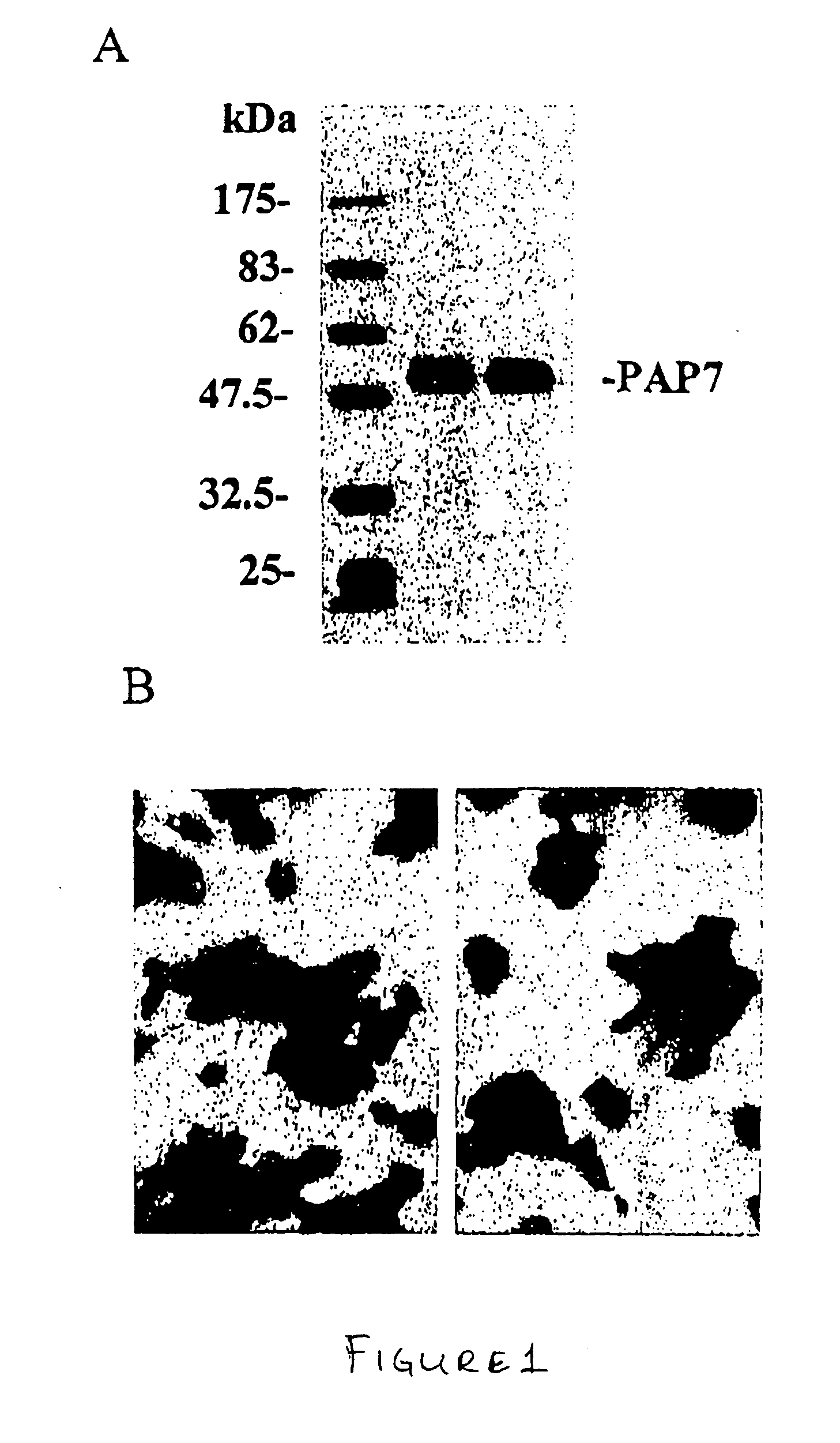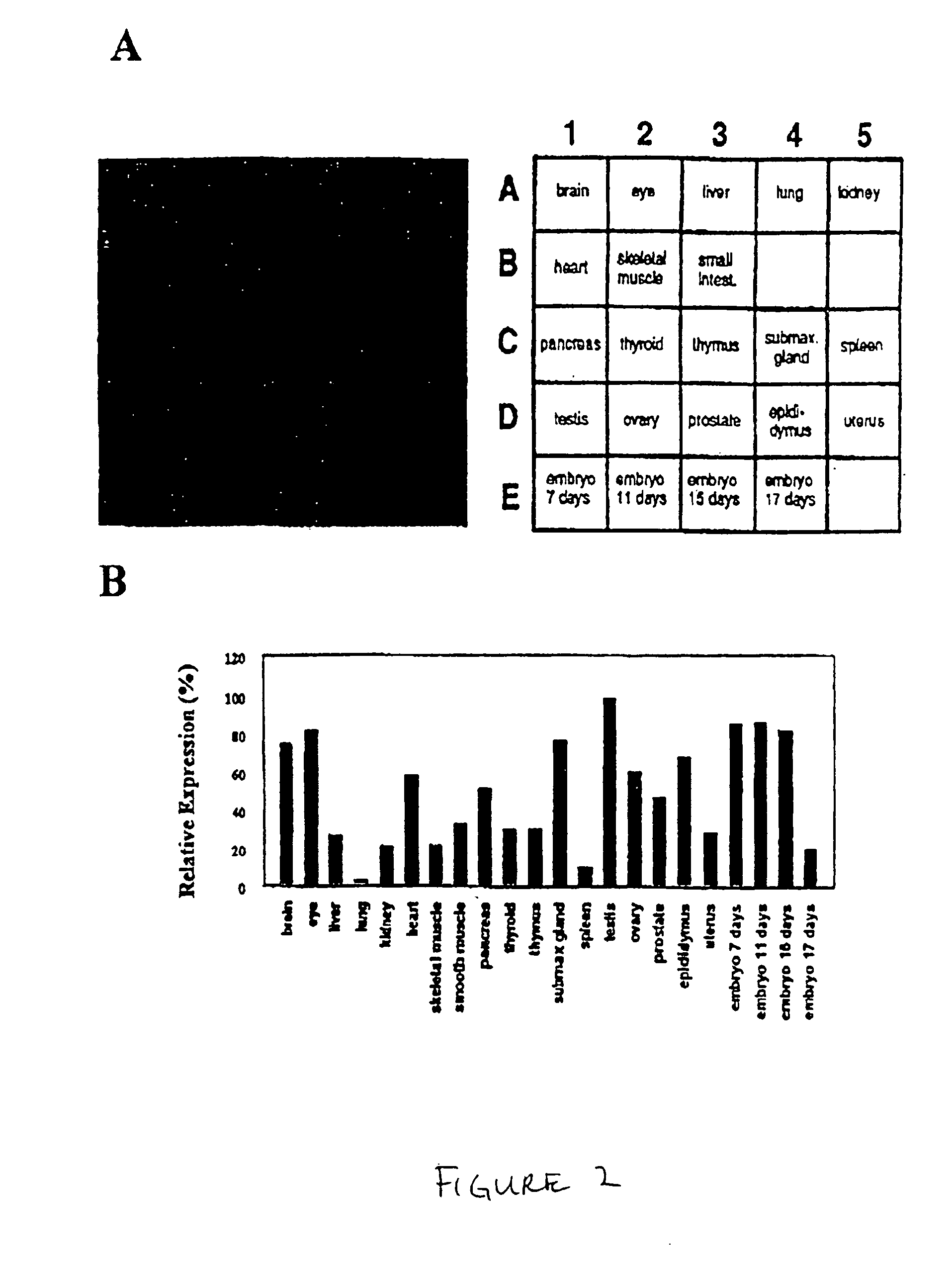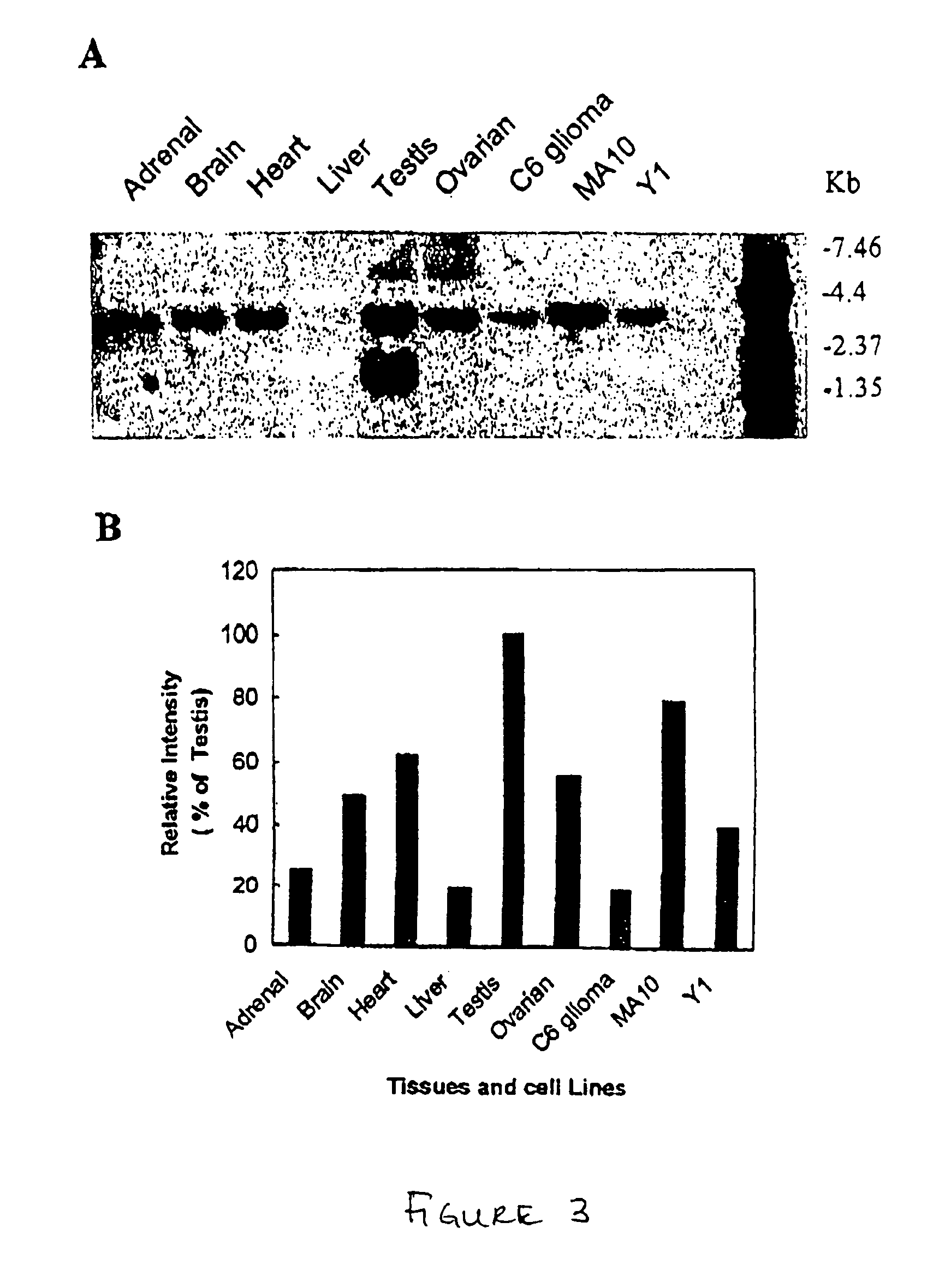Peripheral-type benzodiazepine receptor associated proteins, cloning, expression and methods of use
a technology of peripheral-type benzodiazepine receptor and associated proteins, which is applied in the direction of depsipeptides, peptide/protein ingredients, fungi, etc., can solve the problems of impaired cholesterol transport mechanism, increase or decrease increase or reduce steroidogenesis, and reduce the effect of pbr function or expression
- Summary
- Abstract
- Description
- Claims
- Application Information
AI Technical Summary
Benefits of technology
Problems solved by technology
Method used
Image
Examples
example 1
[0126] Isolation of PBR Associated Proteins
[0127] We have used the MATCHMAKER Two-Hybrid System from CLONTECH in order to clone genes whose products interact with PBR protein. GAL4 (1-147)-PBR fusion (plasmid pGBT9+PBR) was used as a bait to screen a mouse MATCHMAKER testis cDNA library constructed into the pGAD10 two-hybrid vector. About 3×106 transformants were tested, and five positive clones were obtained for their ability to interact with PBR. Library plasmids from these transformants were rescued in E. coli strain DH5α. Both the His+ phenotype and the expression of β-galactosidase were confirmed by a second-round transformation of strain HF7c carrying pGBT9-PBR (Table 1).
TABLE 1Summary of yeast two hybrid screenof mouse testis library by PBRCloneactivityHis3β-GalactosidasePAP3+++PAP7+++PAP20+++Positive control++++
[0128] Plasmids from these positive clones were first analyzed by restriction enzyme digestion and followed by sequence analysis. Two clones were shown to be coded...
example 2
[0129] PAP7 Protein Expression in MA-10 Leydig Tumor Cells
[0130] The total MA-10 cell protein extracts were analyzed by western blot using PAP7 antibody. This antibody specifically recognizes a 50 kda-protein band (FIG. 1A). The PAP7 protein expression in MA-10 cell was also checked by immunocytochemistry. PAP7 antibody specifically stained MA-10 cell, with the signal mostly localized in the cytoplasm (FIG. 1B) This signal can be neutralized by PAP7 peptide, which was used to generate and purify this antibody.
example 3
[0131] PAP7 Cells and Tissue Expression by Dot and Northern Blot
[0132] By dot bot analysis, PAP7 was observed to be highly expressed in brain, eye, submax gland, testis, and ovary. Interestingly, PAP7 expression was at its highest level at early embryonic stage, and decreased before birth (FIGS. 2A and 2B). Consistently, PAP7 mRNA was expressed in adrenal, brain, heart, liver, testis and ovarian tissues by Northern blot analysis. PAP7 had a 1 kb transcript which was only expressed in testis and a 3 Kb major mRNA transcript in the other tissues (FIGS. 3A and 3B). PAP7 was also highly expressed in three cell lines, C6 glioma, MA-10 Leydig cells and Y1 adrenal cells, which have been widely used for studying steroid biosynthesis. All three cell lines expressed PAP7 transcript of the same molecular weight size as in normal tissues. The PAP7 expression level in these cell lines was proportionally correlated with their steroidogenic capability (FIGS. 3A and 3B). The PBR mRNA expression le...
PUM
| Property | Measurement | Unit |
|---|---|---|
| Fraction | aaaaa | aaaaa |
| Angle | aaaaa | aaaaa |
| Cell proliferation rate | aaaaa | aaaaa |
Abstract
Description
Claims
Application Information
 Login to View More
Login to View More - R&D
- Intellectual Property
- Life Sciences
- Materials
- Tech Scout
- Unparalleled Data Quality
- Higher Quality Content
- 60% Fewer Hallucinations
Browse by: Latest US Patents, China's latest patents, Technical Efficacy Thesaurus, Application Domain, Technology Topic, Popular Technical Reports.
© 2025 PatSnap. All rights reserved.Legal|Privacy policy|Modern Slavery Act Transparency Statement|Sitemap|About US| Contact US: help@patsnap.com



